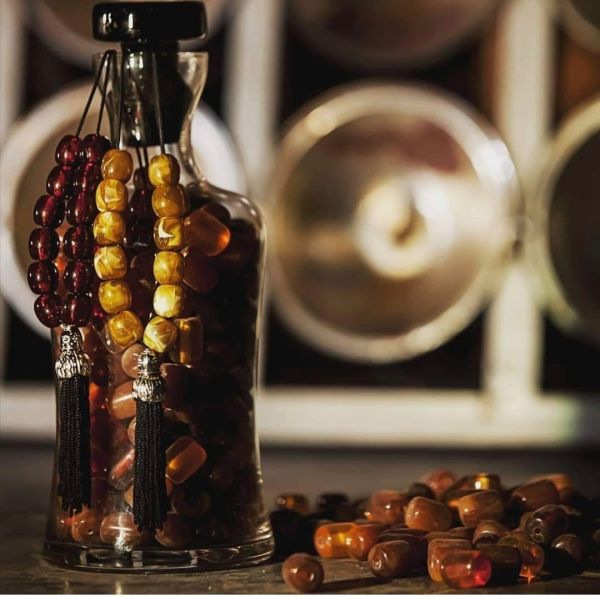Initially the komboloi was a luxury object that served to demonstrate the power of the highest social classes. In fact, the gentlemen showed it off with precious and heavy pearls and silk ends to reiterate their social position. Over time, however, this iconic accessory has become accessible even to the most humble categories including, for example, that of the maghes (μάγκες), colorful characters of Athens at the end of the 19th century who banged the stones of the komboloi on each other precisely to announce their presence.
According to tradition, the komboli has an odd number of pearls to be more manageable and easier to play but also for superstitious and religious reasons. According to some sources, during the period of Turkish occupation the komboloi had 99 beads, one for each name or attribute of Allah and was called Masbaha, which means "reciting prayers". As the years passed, the number of pearls decreased to 33 (like the age of Christ but also as a symbolic reduction into 3 parts of the original 99 pearls) and subsequently to 23, perhaps precisely to express hostility towards the Ottoman world and give voice to a symbolic form of resistance. Furthermore, if in the Masbaha the pearls are strung tightly together and were fixed, the Greek komboli has a lower number of pearls so that they can move and slide pleasantly between the fingers. In its most traditional form the komboloi is built on a rope, preferably silk, and has a pearl larger than the others to represent the papas (Greek priest). A founda (tassel) tied to the end of the rope behind the papas completes and embellishes the object and with its silkiness contributes to its anti-stress function. Unlike the komboloi, the begleri is made of a single open strand and its beads are arranged symmetrically with two heavy clasps at the ends. It is lighter and more suitable for skill games than the Komboloi.
You can find them in the hands of older men sitting in cafes but also in many craft and souvenir shops, ready to become original and meaningful souvenirs to take home with you.
Photo credit: begleradiko.gr

